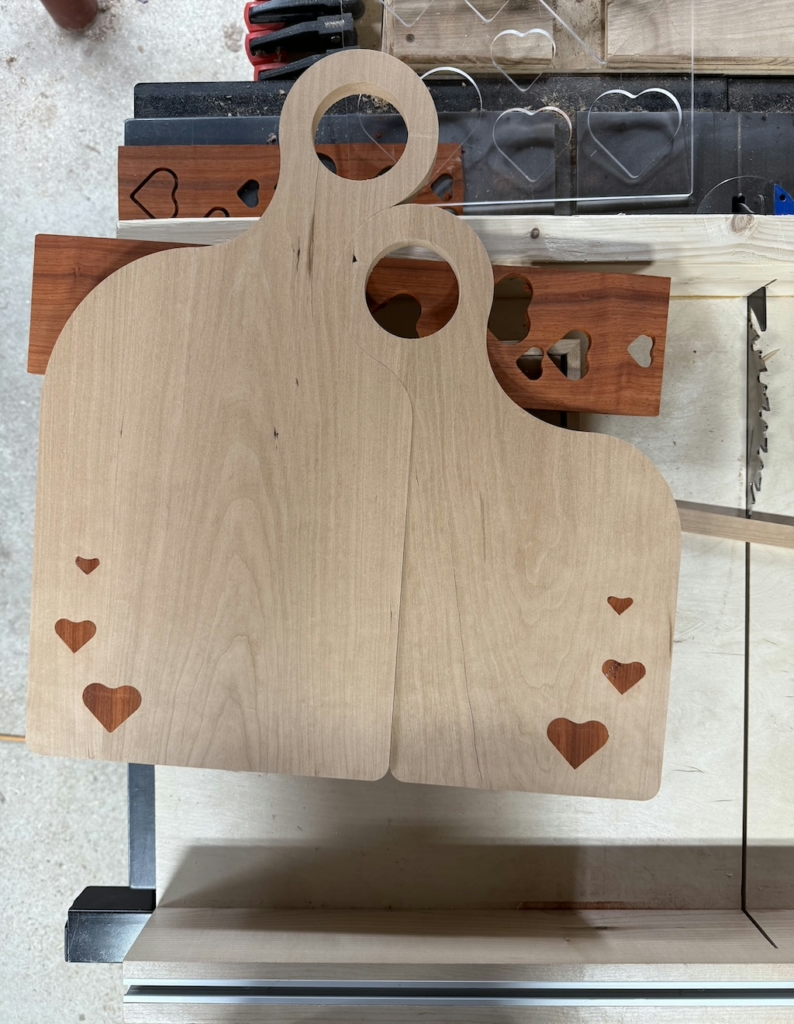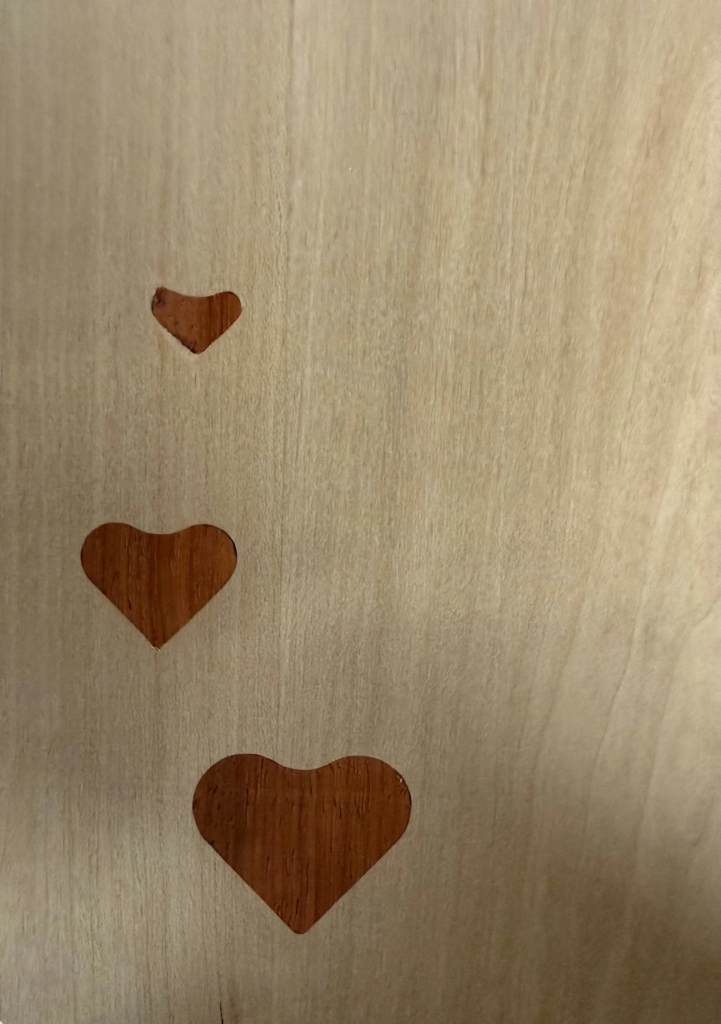Wood Inlays: The Challenge of a Perfect Fit

Lately, I’ve been experimenting with wood inlays, and let me tell you—it’s a rewarding but frustratingly preciseprocess. If you’ve ever wondered what goes into making those intricate designs where one wood fits perfectly into another, this is for you.
I’m working on a Romeo & Juliet-inspired charcuterie board set, designed as a matching pair that fits together beautifully. To make it even more special, I decided to add heart-shaped inlays in a contrasting wood. Simple in theory, right? Just cut the shape, fit it in, and you’re done.
Not quite.
Inlay work is all about precision—too tight, and the piece won’t fit without forcing it, which risks breaking the delicate edges. Too loose, and you’re left with gaps that throw off the whole look. The challenge is finding that perfect middle ground.
The real struggle comes with fine-tuning the fit. After cutting out the hearts, I hand-sand the edges to help them slide in smoothly. Sand too little, and they refuse to go in without a fight. Sand too much, and suddenly, there’s a visible gap. Some of the inlays in these pictures show exactly what happens when that balance is off. Since I’m aiming for a seamless, snug fit, I’ll have to remove and redo them—carefully cutting out the inlays, cleaning up the cutout, and trying again because what you see here is just not good enough.

What I’ve Learned (So Far!)
• Precision cutting is key. If the router template shifts even a little, the inlay and the cutout won’t match up exactly. Oh, and precision hand sanding too, also very important. Cutting or sanding a slight bevel on the bottom of the inlay helps with the seating of the piece into the cutout.
• Different woods behave differently. Some woods compress more than others when pressed into place, making fit calculations trickier. Here, I used padauk since it’s naturally red, but it really likes to splinter if you look at it the wrong way which can lead to broken edges.
• Patience wins. When you rush, you over-sand. When you over-sand, you get gaps. And then… you have to start over.
This Romeo & Juliet charcuterie board set won’t be ready for my next market, but I’m determined to get it right. If you’re curious about woodworking challenges like this, follow along as I keep experimenting. And if you want to see my other work, come visit me at my next market—there’s always something new on my workbench!
